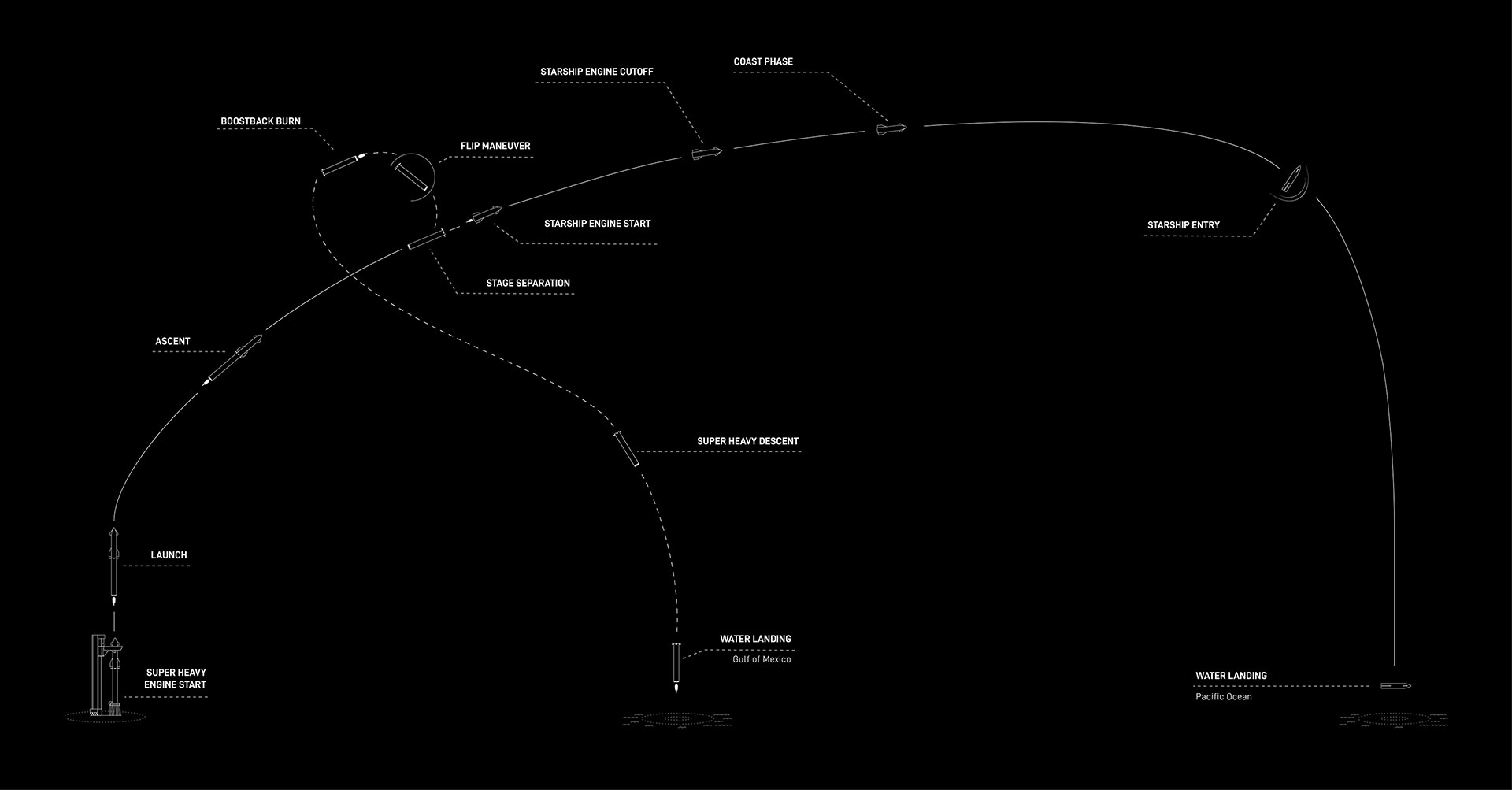This is perhaps one of the most anticipated events in the history of spaceflight, the first orbital flight test of Starship-Super Heavy, the largest most powerful spaceship and rocket ever built.
A few hours ago, SpaceX shared an update regarding the Starship launch. The commercial spaceflight operator is targeting ~08:00 am CT (09:00 am ET) today for liftoff according to an official tweet.
Although SpaceX had scheduled the entire week for the first flight attempt, the odds seem to be in favor of Monday. Until the time of this writing which is around 6:30 am CT (t-1.5 hours), SpaceX seems positive of the final liftoff around the determined timeline.
The live stream of the Starship’s first orbital flight test will be broadcasted on the SpaceX website (spacex.com/launches) and I have also added the livestream video below.
SpaceX published the following information related to the Starhip launch on its website:
SpaceX is targeting as soon as Monday, April 17 at 8:00 a.m. CT for the first flight test of a fully integrated Starship and Super Heavy rocket from Starbase in Texas.
Starship is a fully reusable transportation system designed to carry both crew and cargo to Earth orbit, help humanity return to the Moon, and travel to Mars and beyond. With a test such as this, success is measured by how much we can learn, which will inform and improve the probability of success in the future as SpaceX rapidly advances development of Starship.
To date, the SpaceX team has completed multiple sub-orbital flight tests of Starship’s upper stage from Starbase, successfully demonstrating an unprecedented approach to controlled flight. These flight tests helped validate the vehicle’s design, proving Starship can fly through the subsonic phase of entry before re-lighting its engines and flipping itself to a vertical configuration for landing.
In addition to the testing of Starship’s upper stage, the team has conducted numerous tests of the Super Heavy rocket, which include the increasingly complex static fires that led to a full-duration 31 Raptor engine test – the largest number of simultaneous rocket engine ignitions in history. The team has also constructed the world’s tallest rocket launch and catch tower. At 146 meters, or nearly 500 feet tall, the launch and catch tower is designed to support vehicle integration, launch, and catch of the Super Heavy rocket booster. For the first flight test, the team will not attempt a vertical landing of Starship or a catch of the Super Heavy booster.
A live webcast of the flight test will begin ~45 minutes before liftoff. As is the case with all developmental testing, this schedule is dynamic and likely to change, so be sure to stay tuned to our social media channels for updates.
As we venture into new territory, we continue to appreciate all of the support and encouragement we have received from those who share our vision of a future where humanity is out exploring among the stars!
SpaceX Starship launch web page.
SpaceX also shared an interesting infographic that details the launch, flight, and landing path of both Starship (2nd stage) and the Super Heavy Booster 7 rocket (1st stage).
According to SpaceX, the Super Heavy booster will land in The Gulf of Mexico while Starship is planned to land in the Pacific Ocean. Yesterday we reported that both of these space vehicles are now equipped with the flight termination system (FTS) that might be used to destroy them in case of an emergency.
SpaceX is using prototypes Starship 24 and Super Heavy Booster 7 for the orbital flight test (OFT) targeted for Monday 17th April 2023.
Currently, Starship 24 and Booster 7 are fully integrated (full stack) and mounted on the Orbital Launch Mount at Starbase, Boca Chica, Texas.

Starship OFT Launch Live Stream Video
Related
- SpaceX performs a static fire test on Flight 5 Super Heavy rocket booster (videos, pics)
- Watch the Flight 4 Super Heavy booster make a vertical splashdown landing in the ocean, Flight 5 landing will be caught by tower arms
- Flight 4 Starship survives reentry burn and makes a successful splashdown landing
- SpaceX announces new Starship Flight 4 date, adds Hot-stage Jettison to the timeline, more
- Starship updates: New Flight 4 schedule, watch full stack test, developments at Starbase, more
- SpaceX readies Flight 5 Starship with a static fire test ahead of Flight 4, Starbase updates







